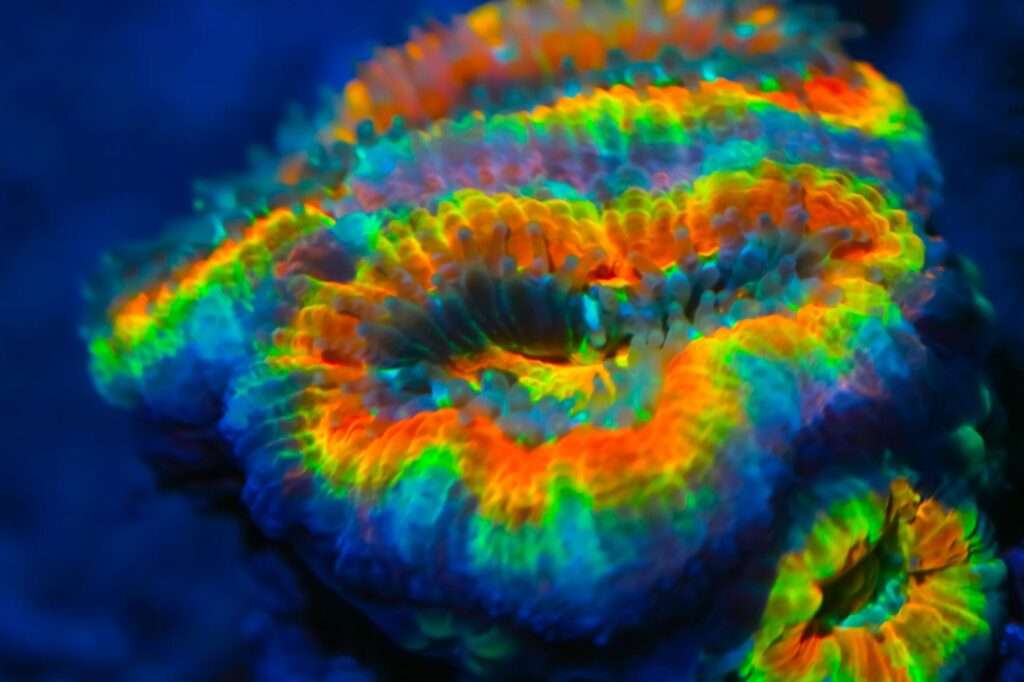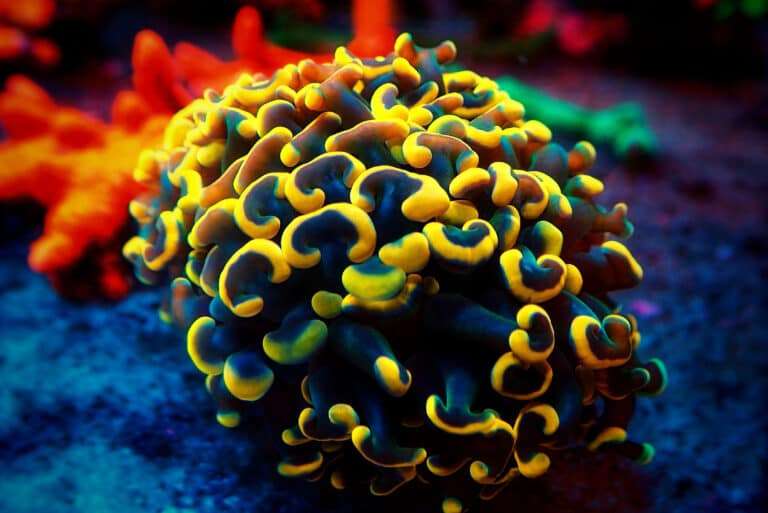
The Coral Tongue due to its resemblance to an extended tongue, Herpolitha limax has a popular name that is extremely descriptive. When viewed from the side, these corals are flat or arched and can have a variety of morphologies. They could be shaped like a boomerang, a tongue, a T, X, or Y. The largest genus of solitary corals is Herpolitha, with natural examples growing up to 39″ tall (1 m). Other names for them include Striate Boomerang Coral, Mole Coral, Slipper Coral, and Hedgehog Coral.
The axial furrow, a noticeable middle groove, is present in the Tongue Coral. Along this furrow, there are mouths (also known as polystomatous), and there are additional mouths all over the surface. Their primary colors are various degrees of brown, cream, or green. On rare occasions, the tentacles, which are typically white or green, can stand out somewhat from the coral.
Habitat
The Indo-West Pacific and Red Sea, as well as the western, northern, and eastern shores of Australia and the islands of the Ryukyu chain in the north, are home to the Herpolitha genus. The flat areas between the lagoons and the reef where the Herpolitha genus of corals live are known as reef slopes. They are located in regions shielded from powerful water currents on soft bottoms and rubble. Compared to other Fungiids, they are often found in slightly deeper waters. In the wild, they are abundant and spreading.
Morphology
When seen from the side, Herpolitha species can have a range of shapes and are flat or arched. They could be shaped like a boomerang, a tongue, a T, X, or Y. The largest genus of solitary corals is Herpolitha, with natural examples growing up to 39″ tall (1 m).
The Herpolitha genus is characterized by an axial furrow, a pronounced central groove. In addition to extra mouths scattered around their surface, they have a number of mouths (known as polystomatous) aligned with the main axis. They have short, widely spread tentacles that resemble swollen tissue more than typical tentacles. They are tucked between radially outward from the central axis, spaced round, ridged septal teeth.
In Captivity

- Feeding
Herpolitha corals have evolved a number of feeding techniques. Many of its nutrients are obtained through an symbiotic interaction with a sea algae called zooxanthellae. They can also take in dissolved organic substances and planktonic creatures as well as food particles from the water column. The Tongue Coral must be fed at least once every day in captivity. Additionally, they require more frequent feedings in low-light situations. They can be fed brine shrimp, mysis, and shredded beef. Try to feed the coral the entire organism when using larger meals.
- Social Interactions and Compatibility
All the genera and species in the Faviidae family get along well with Herpolitha coral, but they might be hostile to other kinds of coral. Fortunately, compared to other Fungiidae family members, its mucus is not as potent and hazardous to nearby corals.
Table





